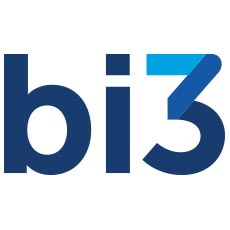Language is powerful. The individual words we use to describe people can substantially impact the way others perceive them. For health funders, and grantmakers in general, we have an imperative to remember that imprecise language can perpetuate power imbalances, set unreasonable expectations and encourage nonspecific interventions that are not relevant to communities.
Some of the terms widely used in health, nonprofit and social service sectors include “vulnerable” and “high-risk” to describe people who are more likely to have relatively poor health outcomes or to experience health disparities. Using these words alone to label people without further explanation may unintentionally cause harm or reinforce negative stereotypes based on someone’s race, ethnicity, socioeconomic status or culture. Additionally, these terms may imply that those at higher risk for poorer social or health outcomes are responsible for their situation.
Healthcare providers use words like “vulnerable” or “high-risk” to describe individuals more susceptible to a particular disease or condition based on their age or other clinical risk factors. However, using these individual terms outside of a clinical setting is too vague.
A recent study of the word “vulnerable” in public health journals found that many articles use the term to describe a broad group of people. Simply describing a population as “vulnerable” does not acknowledge the inequitable distribution of resources and systemic and structural barriers that contribute to health disparities. As grantmakers, we need to name specific obstacles so that we can address them.
Don’t forget who, why and what
As bi3 works to achieve health equity and reduce health disparities, we believe populations more likely to experience poor health outcomes must be specifically defined by who is vulnerable, why they are vulnerable, what they are high-risk for and the result.
In creating our Building Health Equity Request for Proposals, bi3 was intentional about describing the specific groups of people who suffer most from health disparities based on data: Black, Indigenous and People of Color; individuals with lower levels of education and income; individuals living with disabilities; immigrants and new Americans; and individuals without health insurance.
A vast body of evidence has documented the historical ways racism and discrimination negatively impact health outcomes for these populations. bi3 used straightforward language in our grantmaking practices to describe these populations so grantee partners could deploy equitable practices and culturally relevant services to the community.
Alternative Options for Health Funders
Consider using terms and language that focus on the systems in place. Also, try to use language that explains the effect. The Centers for Disease Control (CDC) suggested the following alternatives:
- Groups placed at increased risk/put at increased risk of [outcome]
- Groups with a higher risk of [outcome]
- Groups experiencing disproportionate prevalence/rates of [condition]
bi3 envisions a day when every person has a fair and just opportunity to be as healthy as possible — a day when a person’s health can no longer be predicted by race, ethnicity, ability, or zip code. Our commitment to equity requires us to be thoughtful and intentional with the language we use.
We invite you to join us in using clear and direct language to describe the populations we seek to serve. It is a small but critical step towards achieving health equity.

